灰外 達夫/Haisoto Tatsuo
灰外達夫は、重要無形文化財「木工芸」の保持者(人間国宝)として認定されている木工工芸作家です。「デザインありきではなく、まず技術ありきであり、技術がデザインを作る」という自身の言葉の通り、灰外は「挽き曲げ」という高度な技法によって精緻を極めた作品を数多く手がけました。
1941年、石川県珠洲市に生まれた灰外は中学校を卒業すると、正院町にて建具作りの修業を始めました。その中で学んだ木工芸の技術が、後の「挽き曲げ」等の技法につながっていくのですが、彼が本格的に木工芸に取り組み始めるのは、やや時間をおいて1977年のこととなります。重要無形文化財「木工芸」の保持者である氷見晃堂(ひみこうどう)の遺作展で感銘を受けたことが転機となりました。1981年に第28回日本伝統工芸展にて初入選を果たして以降、数々の賞を獲得した灰外は、その技術と地位を着実に高めていきます。中でも、灰外の代名詞である「挽き曲げ」は、特殊なのこぎりで木板に挽き目を入れ、部分的に曲げながら造形するという手法であり、挽き目の深さや角度の調整などに緻密さが求められます。灰外はこの方法を用いて、細やかな多角形の模様を施し、神代杉や神代楡などの素材の木目を表情豊かに活かしました。
1980年からは独学で陶芸を始め、1995年に日本陶磁協会賞を受賞するなど、本業にとどまらない活躍を見せた灰外は、芸術そのものへの飽くなき探究心を備えていたと言えます。晩年は後進の育成にも励み、石川県立輪島漆芸研究所の講師を務めました。
Tatsuo Haisoto was a woodworking artist recognized as the holder of the Important Intangible Cultural Property “Woodworking Craft” (Living National Treasure) in Japan. As he said, “Design does not come first, but technique comes first, and technique makes design. ” Haisoto created many exquisite works the through the advanced technique of “Hiki-Mage” (bending and shaping).
Born in 1941 in Suzu City, Ishikawa Prefecture, Haisoto began his apprenticeship in architectural woodworking in Shōin Town after graduating from junior high school. The woodworking skills he learned during this time would later lead him to develop techniques such as “Hiki-Mage”. However, it wasn’t until 1977 that he fully devoted himself to woodworking. The turning point came when he was deeply impressed by an exhibition of the posthumous works of Kodo Himi was the holder of the Important Intangible Cultural Property “Woodworking Craft”. In 1981, Haisoto’s work was selected for the first time at the 28th Japan Traditional Crafts Exhibition, and since then he has won numerous prizes and steadily improved his skills and status. Among his notable techniques, “Hiki-Mage” became synonymous with Haisoto’s. This method involves making incisions in wooden boards using a special saw and then partially bending and shaping them, demanding precision in adjusting the depth and angle of the incisions. Haisoto applied this technique to create intricate polygonal patterns, skillfully showcasing the natural wood grain of materials such as Jindai-sugi (Japanese cedar) and Jindai-nire (Japanese elm), which added expressive qualities to his works.
Since 1980, Haisoto began self-studying ceramics, and his achievements extended beyond his primary field. He received the Japan Ceramic Society Award in 1995. It can be said that Haisoto possessed an insatiable spirit of exploration toward art itself. In his later years, he dedicated himself to teaching the next generation of artists and served as a lecturer at the Ishikawa Prefectural Wajima Lacquerware Technical Training Institute.
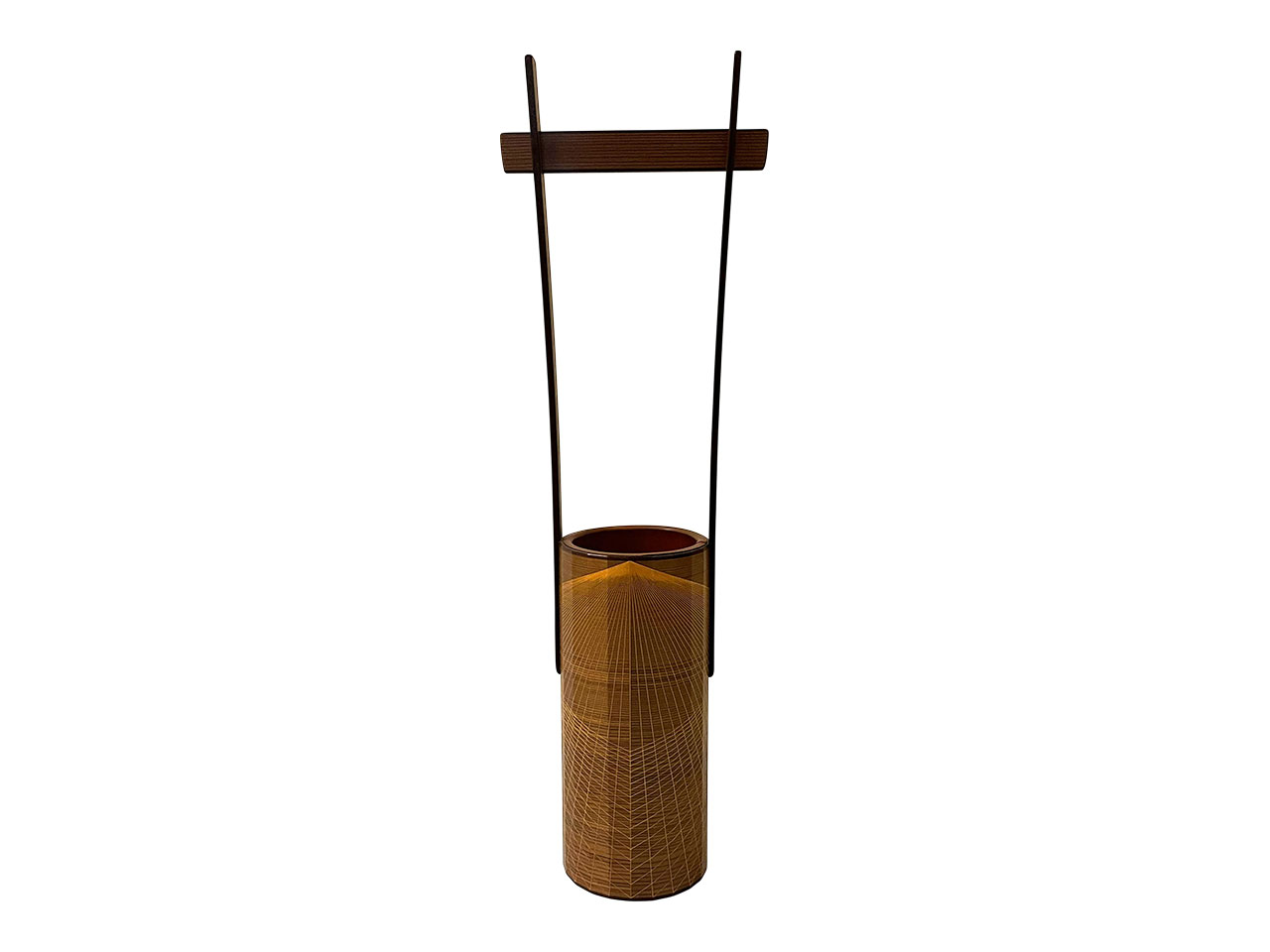

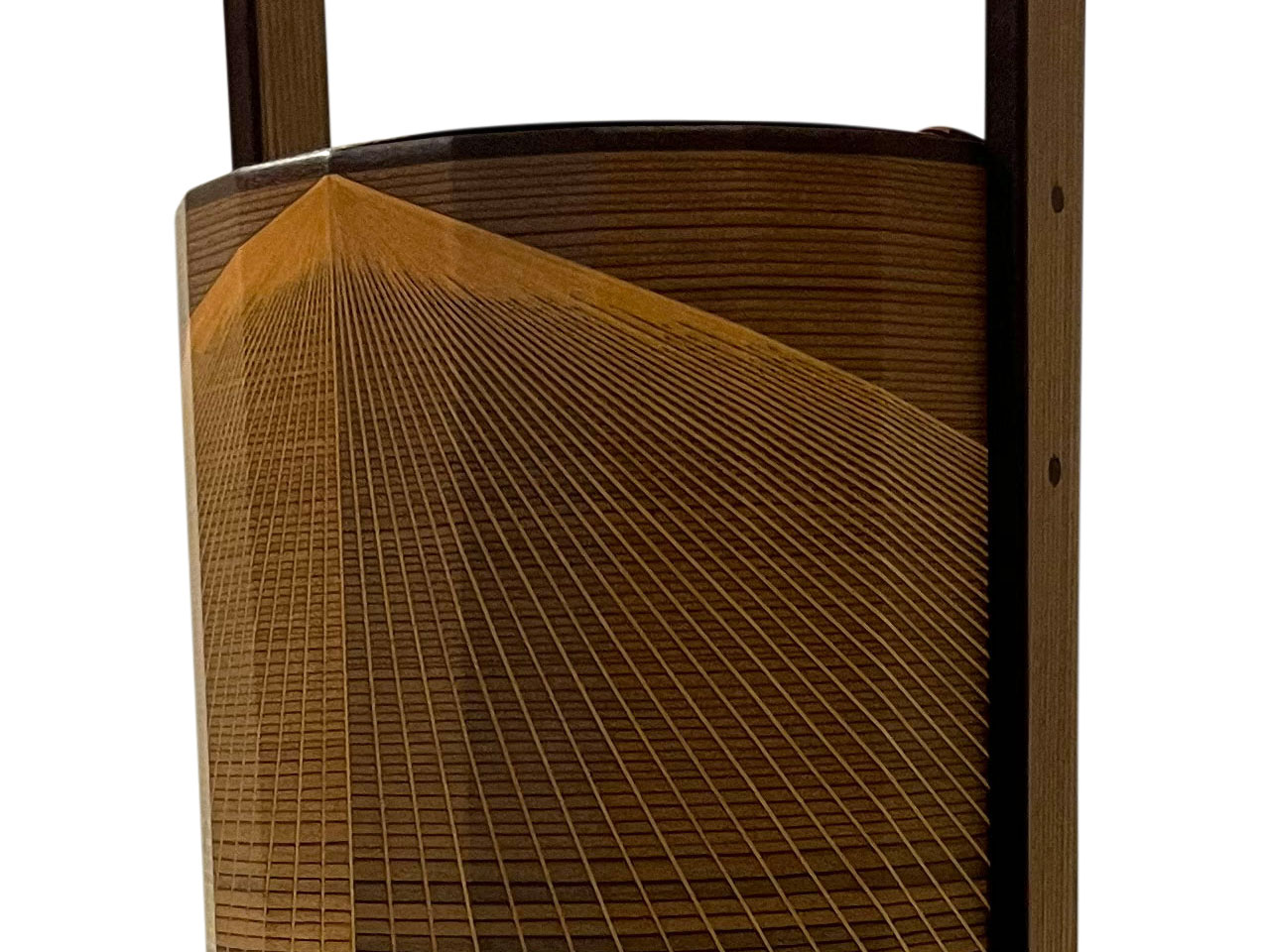
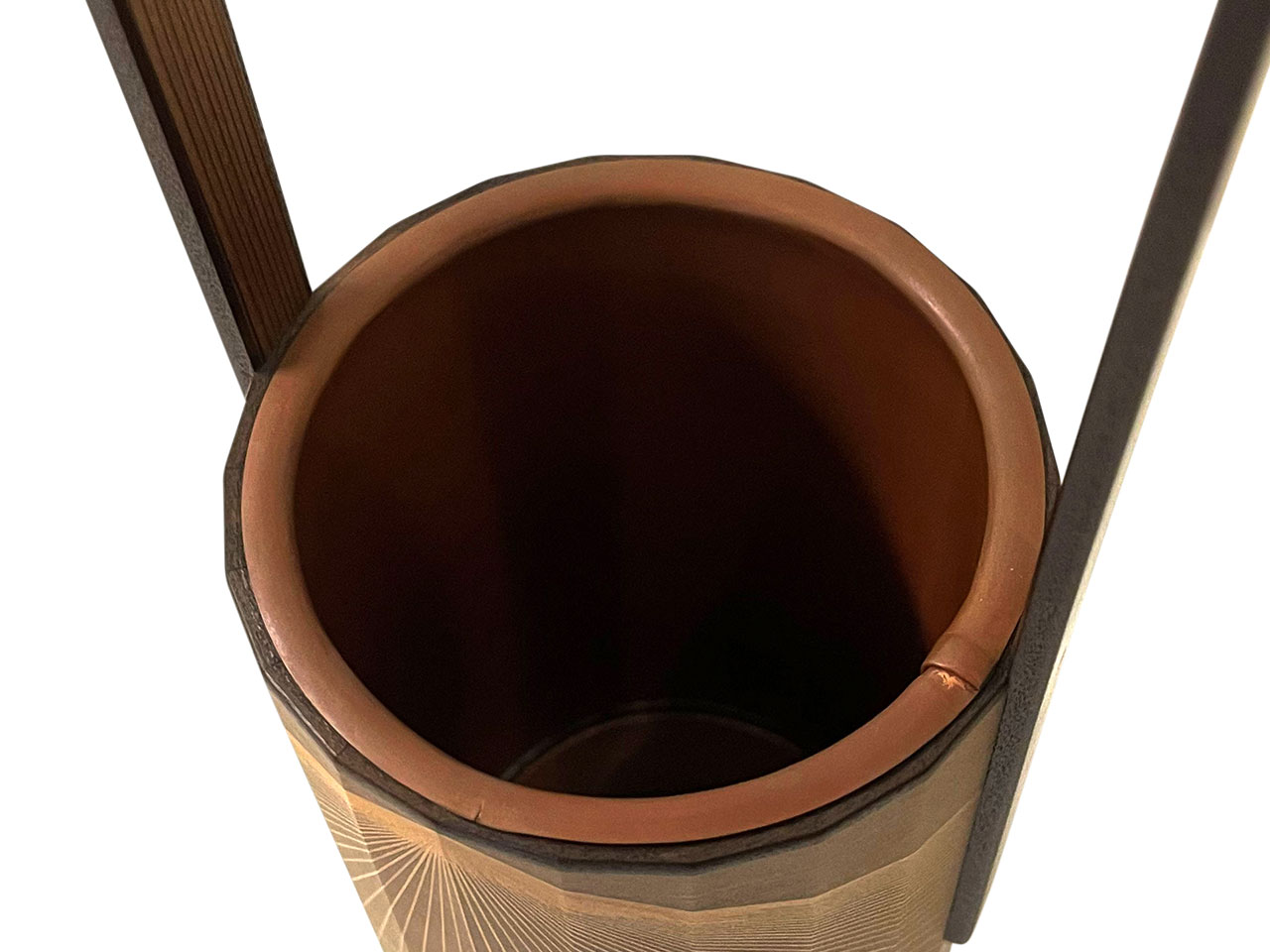
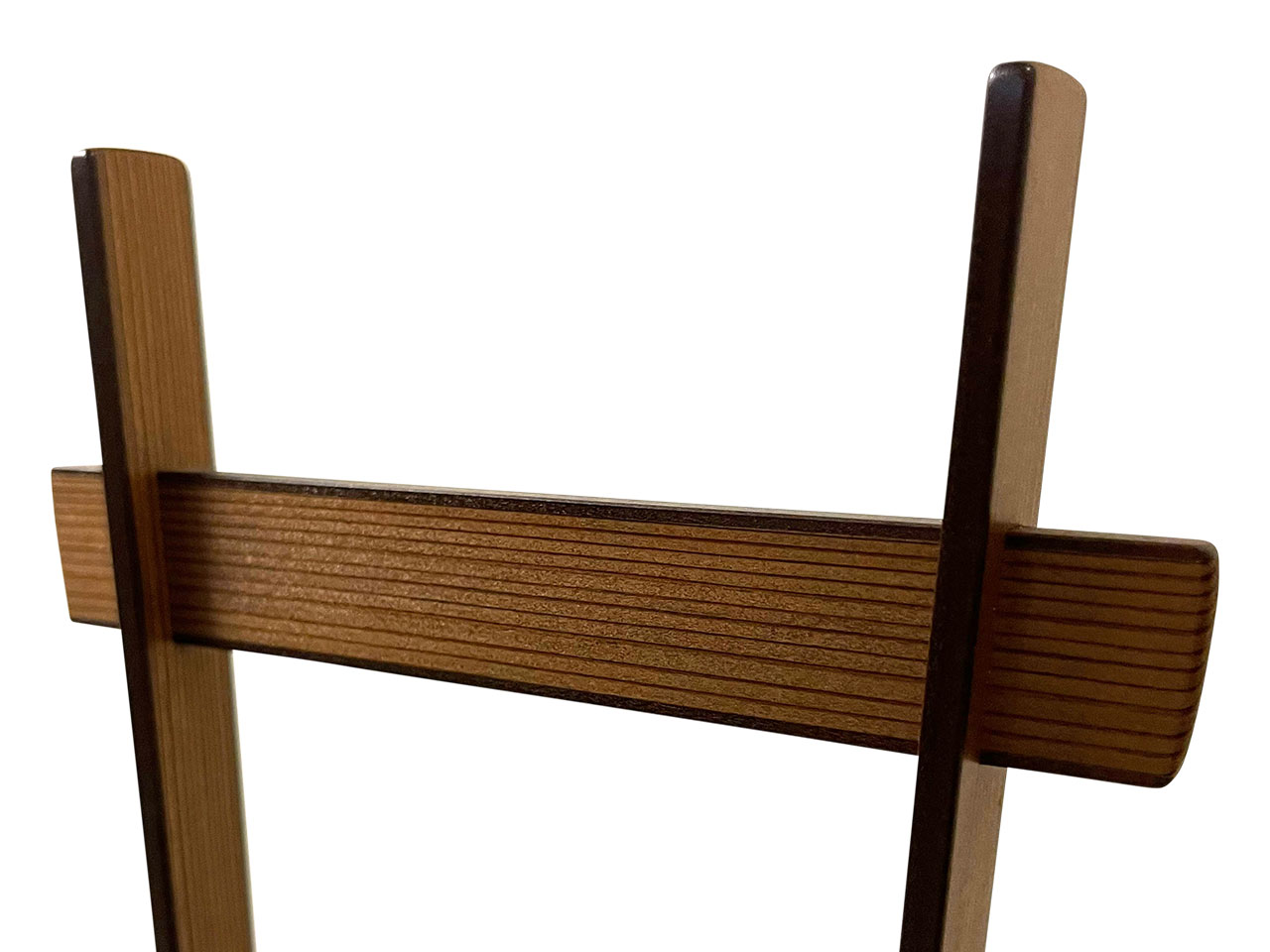
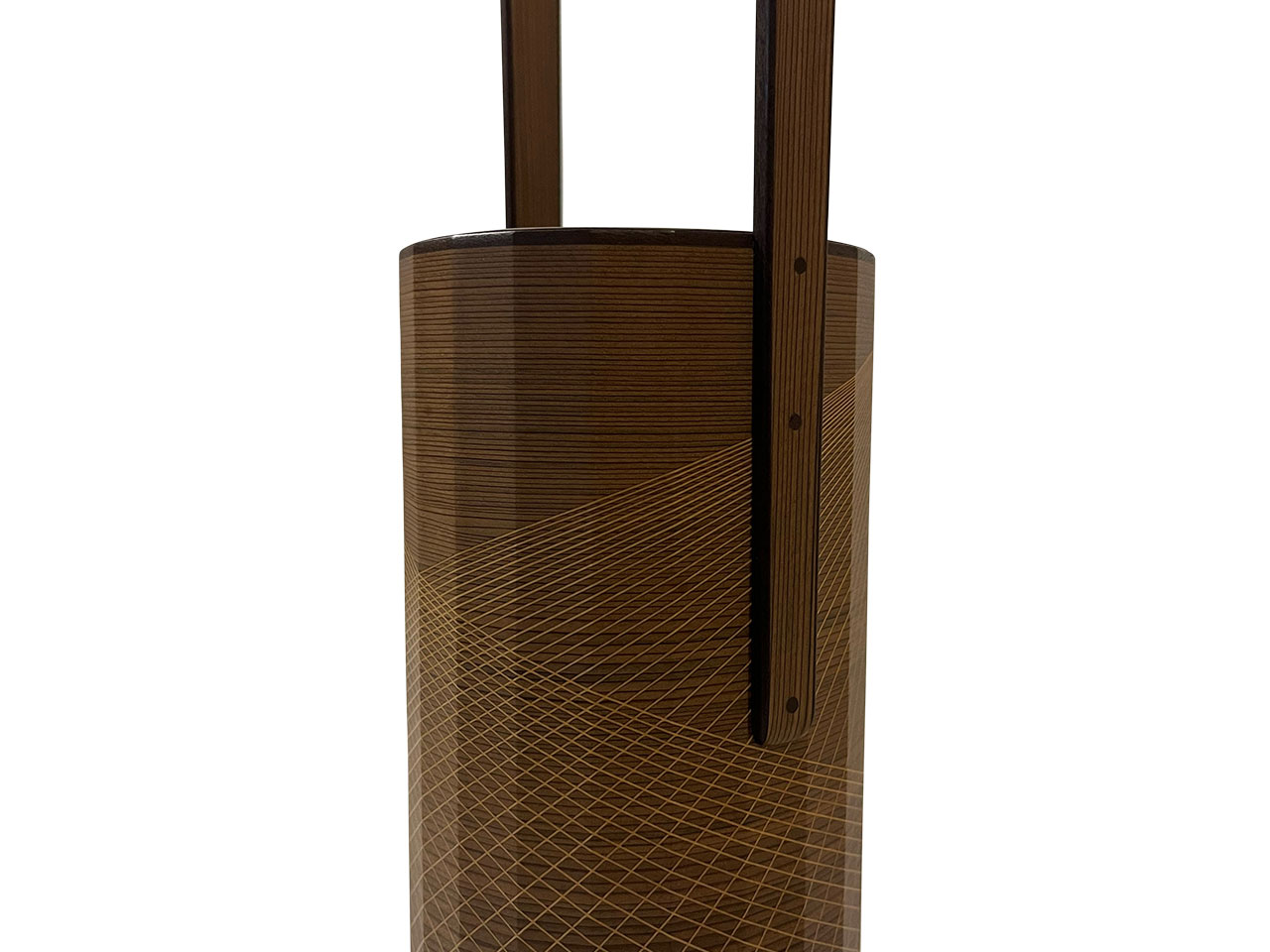

作品名:神代杉木象嵌造挽曲手付花入
サイズ:H50.5×W16cm(共箱)
価格:SOLD OUT
価格は税抜き表示です

